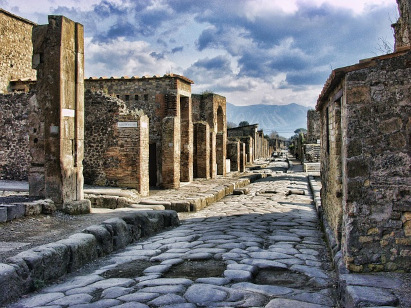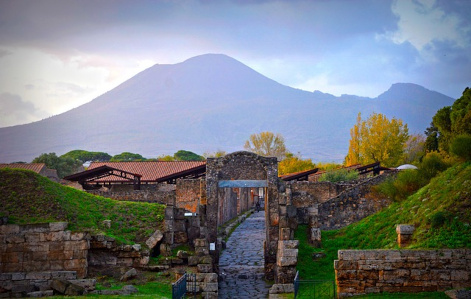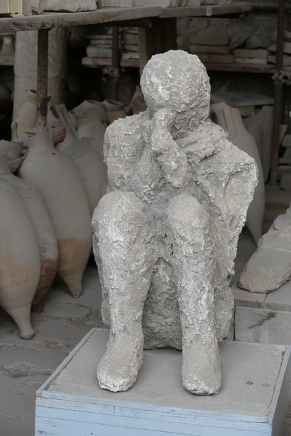Of the millions of volcanic eruptions that mankind has seen, the one that destroyed Pompeii is probably one of the best known. The disaster happened almost 2000 years ago and still has a big impact on science and history to this day. If you are interested in finding out more about Pompeii and Mount Vesuvius, then keep reading!

Pompeii
Pompeii is an Italian ancient city located in Campania, 23km away from Naples. In the year 79 CE Pompeii had a population of around 11.000 to 20.000 inhabitants and was quite a wealthy town with many luxurious houses and lots of artwork. Pompeii is one of the most visited attractions in Italy and the UNESCO World Heritage Site counts up to 2.5 million visitors annually. The city was built around 8km southeast of Mount Vesuvius on top of a coastal lava plateau created by an earlier volcanic eruption. Pompeii covered an area of 0.67 km².

Volcanic eruption
17 years before the volcanic eruption that destroyed both Pompeii and Herculaneum, in 62 CE, an earthquake significantly damaged them and they probably had not yet fully recovered in 79 CE. Nonetheless, Pompeii spent a great amount of attention on restoring affected buildings and even expanding the city, as with the Central Baths. This is why it’s often questioned if, for example, the missing statues are a sign of robberies after the eruption rather than a sign of incompletion. The Eruption of Mount Vesuvius began in the midday of August 24, 79 CE with a rain of pumice for 18 hours. Pumice is a light and porous rock which is created when liquid lava, containing masses of gas, is ejected into the air. This time period gave the inhabitants of Pompeii and the neighbouring cities some time to escape. On the morning of the 25th of August pyroclastic flows, which is a very fast-moving substance of hot gas, rocks and ash, began near the volcano, quickly making its way down to Pompeii. With a speed of 100km/h to 700km/h and a temperature of up to 1000°C, it took down every structure in the way and suffocated everyone who hasn’t died yet from the pumice rain. After the volcanic eruption Pompeii and all the people whose attempts at fleeing failed, were covered in 6 to 7 meters of rocks, pumice and ash. For 17 centuries Pompeii was protected from vandalism or destruction through weather and climate because of the thick layer.

Consequences
Late in the 16th century, Pompeii was first discovered by architect Domenico Fontana. Nothing happened until 1748 when work started and in 1763 the city was officially identified as Pompeii. The excavations in Pompeii and Herculaneum in the mid-18th century marked the beginning of modern archaeology. Over the years many treasure seekers executed irresponsible digging until it came to a stop in 1860 when Giuseppe Fiorelli, an Italian archaeologist, became the director of the project. He also developed the technique of making casts of victims by pouring cement into the hollows formed when the bodies decomposed and fell apart.
The history of Pompeii has had a big impact on European culture. The excavations sparked a huge interest in antiquity and Artists, architects, furniture makers and many more let Pompeii inspire their work.
Everyone has probably heard about Pompeii a couple of times during their life but I hope that this article has brought you some information that you might not have known yet about this beautiful lost city.
Sources:
https://www.britannica.com/place/Pompeii
https://en.wikipedia.org/wiki/Eruption_of_Mount_Vesuvius_in_79_AD
https://en.wikipedia.org/wiki/Pompeii

